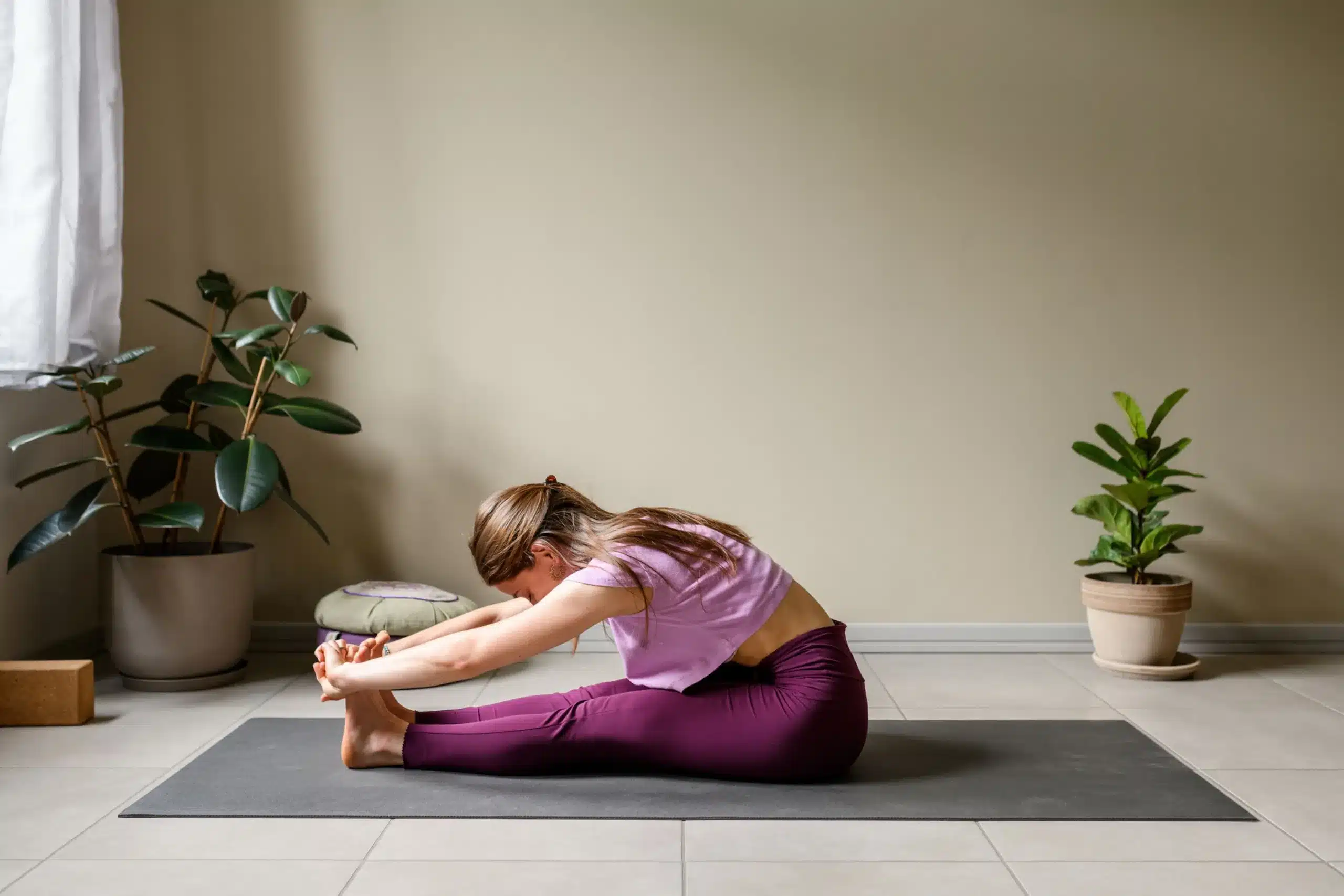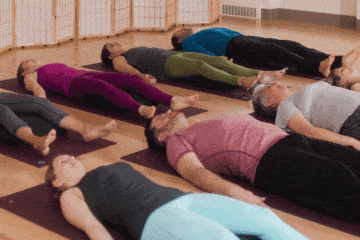The spine is the central axis of the body, providing structural support, mobility, and protection for the delicate spinal cord. However, factors such as poor posture, sedentary lifestyle, and muscular imbalances can lead to misalignment of the spine, resulting in back pain and discomfort.
Fortunately, yoga offers a holistic approach to spinal alignment and back pain relief, incorporating poses and practices that target specific areas of the spine, strengthen supporting muscles, and promote overall spinal health.
In this article, we’ll explore how yoga can help align the spine, alleviate back pain, and enhance overall well-being.
Understanding Spinal Alignment and Back Pain
Spinal alignment refers to the natural curvature of the spine, which consists of three main regions: the cervical spine (neck), thoracic spine (upper back), and lumbar spine (lower back).
When the spine is properly aligned, the vertebrae are stacked in a balanced and symmetrical manner, allowing for optimal movement and function.
However, misalignments or deviations from the spine’s natural curvature can lead to compression, tension, and strain on the muscles, ligaments, and nerves surrounding the spine, resulting in back pain and discomfort.
Common factors that contribute to spinal misalignment and back pain include:
- Poor posture: Prolonged sitting, slouching, and hunching over electronic devices can disrupt spinal alignment and lead to muscle imbalances and tension in the back.
- Weak core muscles: The muscles of the core, including the abdominals, obliques, and back muscles, play a crucial role in stabilizing and supporting the spine. Weakness in these muscles can contribute to spinal instability and back pain.
- Sedentary lifestyle: Lack of movement and physical activity can lead to stiffness and tightness in the muscles surrounding the spine, exacerbating spinal misalignments and increasing the risk of back pain.
- Stress and tension: Emotional stress and tension can manifest as physical tension in the muscles of the back, shoulders, and neck, leading to muscle tightness and discomfort.
The Role of Yoga in Spinal Alignment and Back Pain Relief
Yoga offers a comprehensive approach to spinal alignment and back pain relief by addressing the physical, mental, and energetic aspects of discomfort. Through a combination of asanas (poses), pranayama (breathwork), and mindfulness practices, yoga helps:
- Improve posture: Yoga poses strengthen the muscles that support proper spinal alignment, including the core, back, and postural muscles. By promoting awareness of body alignment and encouraging proper posture, yoga helps reduce strain on the spine and alleviate back pain.
- Increase flexibility: Yoga stretches and lengthens the muscles and connective tissues surrounding the spine, promoting flexibility and mobility. Improved flexibility allows for greater range of motion in the spine and reduces the risk of compression and tension-related back pain.
- Reduce tension: Yoga practices such as deep breathing, meditation, and relaxation techniques help reduce stress and tension in the body and mind. By promoting relaxation and calming the nervous system, yoga helps release muscular tension and alleviate back pain.
- Enhance body awareness: Yoga cultivates mindfulness and body awareness, encouraging practitioners to tune into subtle sensations and cues within their bodies. By developing greater proprioception, individuals can identify areas of tension or misalignment in the spine and respond with targeted stretches and corrective exercises.
Yoga Poses for Spinal Alignment and Back Pain Relief
Here are some yoga poses that target specific areas of the spine and can help alleviate back pain and promote spinal alignment:
- Mountain Pose (Tadasana):
- Stand tall with feet hip-width apart, arms by your sides, and shoulders relaxed.
- Root down through your feet and engage the muscles of the legs and core.
- Lengthen through the spine, reaching the crown of the head towards the sky.
- Hold for several breaths, focusing on grounding through the feet and elongating the spine.
- Cat-Cow Stretch (Marjaryasana-Bitilasana):
- Begin on your hands and knees in a tabletop position, with wrists under shoulders and knees under hips.
- Inhale as you arch your back, lifting your chest and tailbone towards the ceiling (Cow Pose).
- Exhale as you round your spine, tucking your chin to your chest and drawing your navel towards your spine (Cat Pose).
- Continue flowing between Cat and Cow poses with each breath for several rounds, focusing on spinal mobility and breath awareness.
- Downward-Facing Dog (Adho Mukha Svanasana):
- Start on your hands and knees in a tabletop position.
- Lift your hips towards the ceiling, straightening your arms and legs to form an inverted V shape.
- Press firmly into your hands and feet, lengthening through the spine and reaching your heels towards the ground.
- Hold for several breaths, focusing on elongating the spine and opening the chest and shoulders.
- Child’s Pose (Balasana):
- Kneel on the floor with big toes touching and knees wide apart.
- Sit back on your heels and fold forward, extending your arms overhead or resting them by your sides.
- Rest your forehead on the mat and relax your entire body, surrendering to gravity.
- Hold for several breaths, focusing on lengthening the spine and releasing tension in the back and hips.
- Cobra Pose (Bhujangasana):
- Lie on your belly with legs extended behind you and palms planted under your shoulders.
- Press into your hands and lift your chest off the mat, keeping your elbows close to your body.
- Draw your shoulders back and down, opening the chest and lifting through the crown of the head.
- Hold for several breaths, lengthening the spine and engaging the muscles of the back.
Incorporating Yoga into Your Spinal Alignment Routine
To experience the full benefits of yoga for spinal alignment and back pain relief, consider incorporating the following practices into your routine:
- Practice regularly: Aim to incorporate yoga into your daily routine, even if it’s just for a few minutes each day. Consistency is key to reaping the benefits of yoga for spinal health and back pain relief.
- Listen to your body: Pay attention to how your body responds to each pose and modify as needed to find a comfortable edge. Avoid pushing into pain or discomfort and prioritize relaxation and ease.
- Focus on breath: Use the breath as a tool to deepen your practice and promote relaxation. Coordinate movement with breath, and incorporate deep, diaphragmatic breathing into your yoga practice to enhance spinal mobility and release tension.
- Seek guidance: If you’re new to yoga or dealing with specific back pain issues, consider seeking guidance from a qualified yoga instructor or physical therapist who can offer personalized recommendations and modifications tailored to your needs.
- Be patient and persistent: Healing takes time, so be patient with yourself and trust in the process. With consistent practice and gentle persistence, you can gradually improve spinal alignment, alleviate back pain, and experience greater freedom and ease in your body.
Conclusion
Yoga offers a holistic approach to spinal alignment and back pain relief, incorporating poses and practices that target specific areas of the spine, strengthen supporting muscles, and promote overall spinal health.
By incorporating yoga into your routine and exploring gentle, mindful movement, breathwork, and relaxation techniques, you can create space for healing, release tension, and cultivate a greater sense of ease and well-being in your body and mind.
Embrace the transformative power of yoga and discover the profound healing potential within your own spine.



